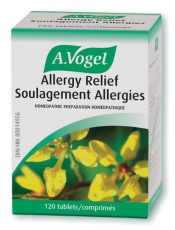The weather was nice all week until your town got hit with three days of torrential downpour – enough to cause basements to flood all around the neighbourhood. You clean and dry as best you can, and go about your routine.
Months pass and you begin to notice a tickle in your throat and a runny nose, usually a sign you’ve come down with a cold. Interestingly enough though, the symptoms improve when you leave the house, and reappear upon your return. After some amateur detective work, you discover that the flood left you with more issues than a wet basement – you’ve got mold.
What is mold and mildew?
Mold and mildew are fungal invasions differentiated by their colour, texture, and size. Mildews are more of a surface invasion that tend to be a white-gray colour with a flattened structure. Mold is a more severe invasion that can be green-black and has the familiar fuzzy visual.
The two tend to grow on different mediums as well. Mildews grow on damp surfaces while molds grow on organic surfaces such as spoiled food or wood and cause a pungent smell reminiscent of a wet sock. This is due to molds ability to release gaseous products known as microbial volatile organic compounds (MVOC). They are a byproduct of fungal cell metabolism and can lead to respiratory irritation. If you do discover mildew or mold in your home, the unique profile of MVOC’s released by certain species of fungus can help an allergist narrow down which species is to blame.
How do fungi and allergies relate?
One of the major functions of the respiratory tract is humidifying the air we inhale, sometimes up to 100% to ensure that oxygen and carbon dioxide can be exchanged within the cells. The air is also warmed to approximately 33 degrees Celsius. Imagine how happy a fungal spore would be if they found themselves in a warm, moist environment like the lungs! That spore just hit the jackpot and would quickly begin to set up camp.
Fungal spores are easily transported through the air and enter our nasal passages and lungs where they are recognized by the immune system as invaders. The body releases allergy-causing antibodies, and through a series of chain reactions, histamine is released as well. This compound causes symptoms such as runny nose, a tickle in the throat leading to cough, watery eyes, and sneezing. All of these symptoms are the body’s attempt to try and expel the fungal spores so it can return to its normal everyday function.
What does a severe case of a respiratory fungal infection entail?
In the worst-case scenario, the fungi can proliferate in the respiratory tract leading to the development of a fungus ball known as an aspergillosis. As these colonies grow, they begin to impact the neighbouring tissues leading to bleeding, and destruction of the alveoli. As the structure continues destroying more and more tissue, individuals may begin to cough up blood and find themselves short of breath as alveoli are destroyed.
4 ways to reduce mold and mildew allergies
- Dehumidify!
Fungi species are fans of moist areas and tend to thrive in temperatures ranging from 21 to 32 degrees Celsius with a relative humidity of 50% or higher. When surfaces are dry, the mold spores have difficulty attaching to the surface, but as they become damp, the spores can latch on to the water molecules and begin to proliferate. Reducing the humidity in your home is a way to deter the growth of fungal species by ensuring they can’t get a foot hold in the first place. - Air quality.
This may come as a surprise for many readers, but the air quality inside is often far worse than that outside. The outdoors encourages the dilution of gasses into the atmosphere whereas an indoor space tends to trap and concentrate gasses, pathogens, and fungal spores. Air pollution is the world’s largest environmental health risk according to the World Health Organization as exposure to pollutants like nitrous oxide, sulphur dioxide, and ozone damage the body. This can lead to an aggravation of symptoms and inflammation throughout the body if exposure becomes chronic.
Opening your windows to allow a breeze through encourages ventilation and avoids stagnant air, another thing fungal species love. Levels of pollutants tend to rise indoors during the winter since individuals spend more time inside, so opening a window for a few minutes can help avoid the accumulation of fungal spores in areas like a bathroom or basement. Additionally, high efficiency particulate air (HEPA) filters can trap microscopic spores. - Get yourself some green.
Plants are biologically built to absorb pollutants and have the enzymes to break them down. In an interesting study, when English Ivy was added to a container containing moldy bread, the levels of airborne-mold had decreased by 60% when tested six hours later. Upon testing again after 12 hours, the presence of airborne-mold had dropped by 78% and reduced allergy symptoms! - Symptom relief.
If you’ve tried all of these and still have that annoying itch, products such as the remedy Allergy Relief can help eliminate the toxins that overload the immune system. An in-house study demonstrated a self-reported improvement in allergy symptoms in 88.5% of participants.
References:
https://www.avogel.ca/en/health/the-immune-system/allergic-reactions/clinical-studies.php
https://www.cell.com/trends/plant-science/fulltext/S1360-1385(18)30046-3
https://www.ncbi.nlm.nih.gov/pmc/articles/PMC2443227/
https://www.ncbi.nlm.nih.gov/pmc/articles/PMC3192198/
https://www.ncbi.nlm.nih.gov/pmc/articles/PMC4234204/
https://www.ncbi.nlm.nih.gov/pmc/articles/PMC4587002/
https://www.ncbi.nlm.nih.gov/pubmed/1824315/
https://www.ncbi.nlm.nih.gov/pubmed/19204852
https://www.ncbi.nlm.nih.gov/pubmed/24530730
https://www.ncbi.nlm.nih.gov/pubmed/25056742
https://www.ncbi.nlm.nih.gov/pubmed/25670021
https://www.ncbi.nlm.nih.gov/pubmed/29681504
https://www.ncbi.nlm.nih.gov/pubmed/29683210
https://ntrs.nasa.gov/search.jsp?R=19930073077
http://www.webmd.com/allergies/news/20051107/english-ivy-fix-allergies





